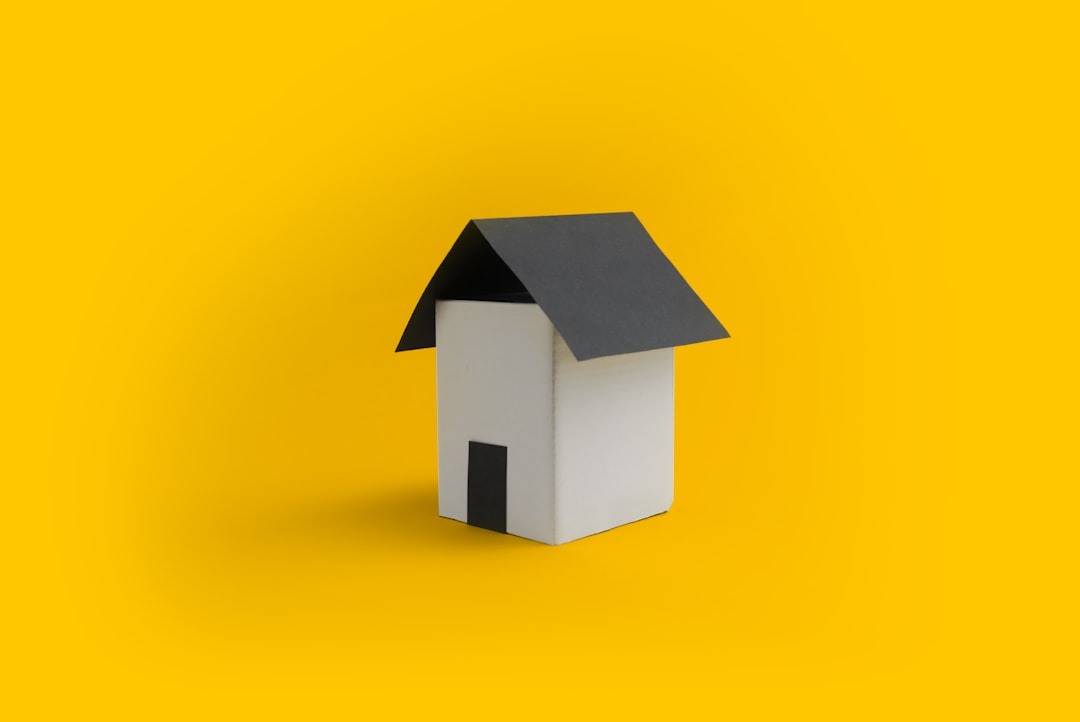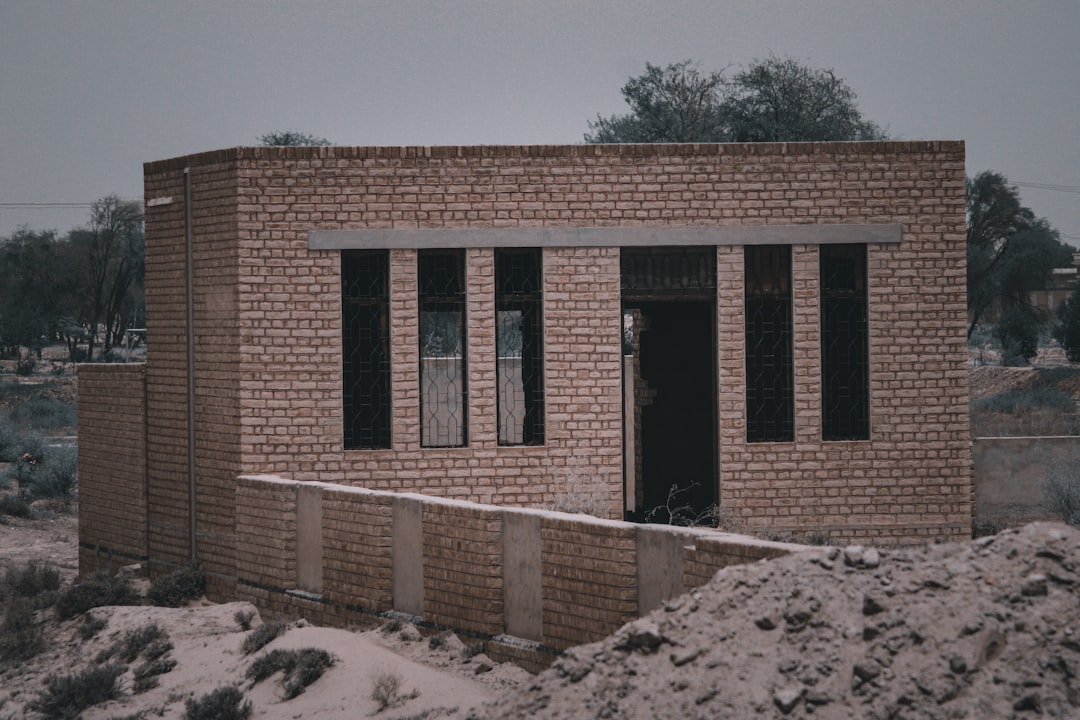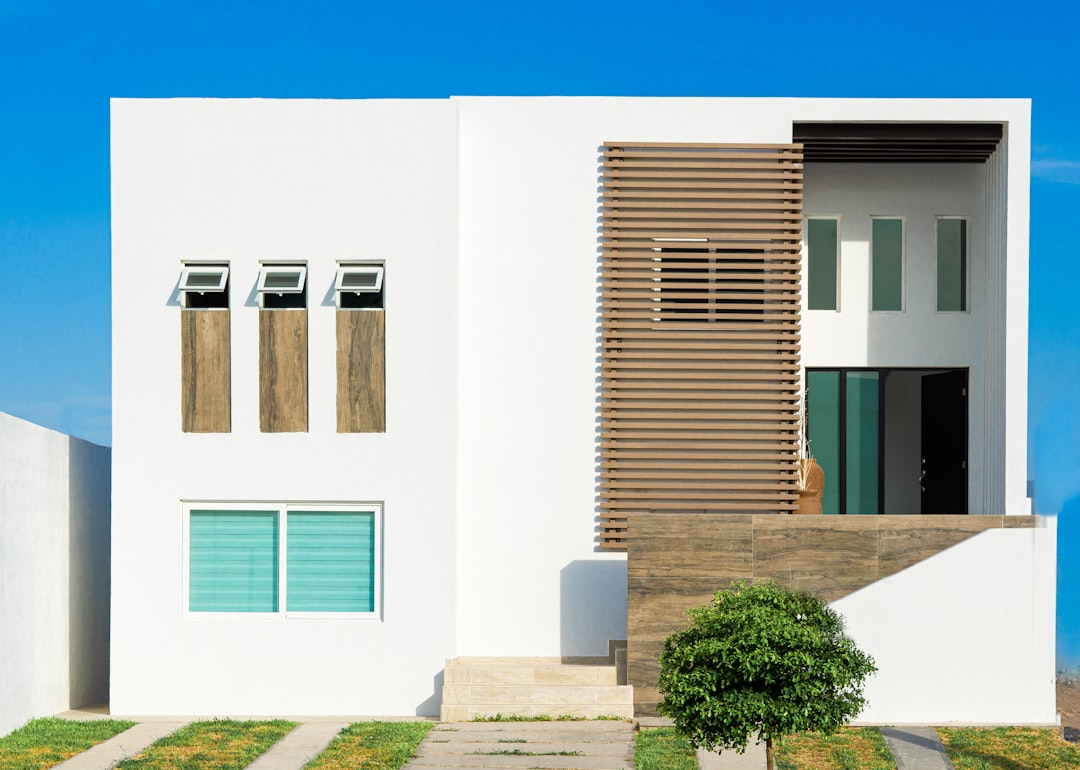

Engage prospects with a scan and streamline customer engagement with FREE QR code marketing tools by Sona – no strings attached!
Create a Free QR CodeFree consultation

No commitment

Engage prospects with a scan and streamline customer engagement with FREE QR code marketing tools by Sona – no strings attached!
Create a Free QR CodeFree consultation

No commitment
Passive home building is transforming the way we approach energy efficiency and sustainability in construction. Meeting rigorous standards for airtightness, insulation, and renewable energy use, passive homes can reduce energy consumption by up to 90 percent compared to traditional houses. The benefits are compelling: lower utility bills, reduced carbon footprint, better indoor comfort, and future-ready performance. Yet the marketing and sales process often fails to keep up with the sophistication of the product. The journey still starts on a job site, at a trade show booth, or in a model home where interest is high but attribution is weak and follow-up is inconsistent.
Despite well-produced brochures and knowledgeable teams, many high-intent prospects never make it to a conversation. Static flyers, manual inquiry forms, or generic sign-up sheets create unnecessary friction. Engagement signals go unnoticed: a long pause at a detail board about U-factor windows, a deep dive into ventilation standards, a second visit to a model home. The result is missed opportunities, muddled reporting, and a longer, leakier sales cycle.
Leading passive home builders are solving this gap with QR codes. By embedding QR codes at critical offline-to-online touchpoints, they capture anonymous intent, tie print and in-person interactions to digital journeys, and trigger personalized follow-up in real time. This upgrade is the connective tissue for a data-driven, sustainability-minded buyer who expects clarity, convenience, and proof at every step.

Traditionally, passive home marketers have struggled to qualify and convert prospects who engage via physical collateral, whether brochures at expos or info packets left in model homes. These encounters signal real interest, yet without a digital bridge they rarely translate into trackable actions. Paper-based processes do not reveal who scanned the insulation specs, who compared glazing options, or who visited the booth twice. The marketing team is then left guessing which messages resonated and which activities generated pipeline.
Bridging this gap begins with rethinking each analog touchpoint and attaching a QR-enabled next step. You are not replacing print or in-person conversations, you are amplifying them. The goal is to reduce friction between curiosity and commitment, turning every moment of interest into a measurable action.
To ensure each scan becomes an actionable event rather than a vanity metric, use dynamic QR platforms to tie code activity directly to digital flows: inquiry, appointment booking, and interactive content. With Sona QR, you can update destinations without reprinting, measure performance across placements, and push scans into your CRM for instant follow-up. The outcome is a closed attribution loop that elevates high-intent leads and enables continuous campaign optimization.

Passive home buyers often begin their journey in offline environments: touring a model home, talking to architects at a regional event, or reading a builder’s case study in a printed guide. Without a clean handoff to digital, these promising encounters stall. QR codes offer a practical, low-friction onramp that meets buyers where they are and moves them into measurable actions that you can nurture.
Beyond convenience, QR codes deliver the speed and adaptability that modern buyers expect. They remove the need for app downloads or cumbersome URLs, can be updated after printing, and generate a real-time data trail that informs strategy. For passive home teams balancing premium brand positioning with performance goals, QR codes enable both.
As passive home buyers grow more data-savvy, they expect the marketing experience to reflect the innovation of the product itself. QR codes bring responsive, personalized interactions to the analog world so prospects can glide from paper to web to booked consultation with minimal friction and maximum relevance.
There is no one-size-fits-all QR format. The most effective deployments align the code type with the moment, the message, and the desired action. In passive home marketing, the following formats consistently deliver:
Most builders benefit from dynamic codes for anything campaign related. With Sona QR, you can generate, organize, and update multiple code types from a single dashboard. If your incentive guide changes or you want to A/B test a new landing page, dynamic QR codes let you optimize without reprinting. Start creating QR codes for free.

Lead leakage often occurs at predictable points: busy expo floors, self-guided model home tours, or direct mail that lands without a clear next step. QR codes turn these analog touchpoints into conversion gateways while preserving the tactile value of print and in-person experiences.
Audit your physical footprint and layer QR pathways wherever prospects pause to learn or decide. Align each code to the buyer’s likely question in that context and to the next action you want them to take.
Each placement safeguards against silent drop-offs and transforms previously anonymous interactions into measurable progress in the buyer journey. Over time, your heatmaps will show exactly where interest concentrates and where to invest next.

Passive home buyers are information hungry. They want proof, context, and numbers that make sense for their lot, their climate, and their budget. QR codes can meet that need in the moment and move prospects into qualified conversations.
These use cases extend the reach of your physical marketing while protecting at-risk leads from going cold. Every scan produces a remarketing opportunity, a talking point for your team, and another step toward a contract.
In passive home building, intent signals can be subtle yet strong. A scan of a ventilation explainer suggests comfort priorities. A calculator session indicates budget sensitivity. By deploying multiple QR codes across locations and topics, you can turn these signals into segmented audiences that power relevant retargeting and timely outreach.
Start by mapping your buyer journey and assigning QR codes to the content that best matches each stage. Then tag scans by topic, placement, and action to build behavior-based cohorts you can nurture with precision.
Build smarter segments with Sona’s retargeting playbook and strengthen identity stitching with Sona’s account identification.
QR codes unify offline and digital campaigns so prospects experience a cohesive, data-informed journey. For passive home teams, this alignment matters because consideration cycles can be long and buyers often hop between events, print materials, and online research. Codes ensure that every channel advances the conversation and every scan strengthens your understanding of buyer needs, a trend accelerated by post‑pandemic shifts in guerrilla advertising.
When planned well, QR codes act as connective switches between content types. A brochure becomes an interactive tour. A yard sign becomes a calendar invite. A direct mail piece becomes a personalized financing plan. Each touch builds trust and momentum toward a decision.
QR codes are the offline onramp to your digital marketing engine. With a centralized platform like Sona QR, you can manage all your codes, monitor performance in one place, and sync scan data with your CRM and ad platforms to build a connected, measurable funnel.
Successful QR integration balances creativity with operational rigor. The steps below will help you avoid common pitfalls like poor scannability, unclear CTAs, or disconnected follow-up. Use this checklist to move from concept to conversion-ready deployment with confidence.
Plan to iterate. The first round of placements and CTAs will teach you where and how your buyers prefer to engage. Evaluate results quickly and refine your assets for higher scan-through and conversion rates.
Clarify the business outcome you want. Common goals include boosting virtual tour participation, increasing consult bookings, capturing financing inquiries, or enabling cost comparisons. Choose one primary goal per campaign to keep your message and measurement focused.
Your code type determines flexibility and measurement. Static codes are fine for evergreen assets like a PDF download that does not require updates. Dynamic codes are best for campaigns where you want analytics, routing rules, A/B tests, and post-print edits.
Design influences trust and scans. Clear visual hierarchy, brand alignment, and explicit CTAs increase the likelihood of action. Testing ensures that codes work under real-world conditions.
Place codes where intent is strongest, not just where there is empty space. Map placements to the next logical action in the buyer journey and tailor the surrounding message accordingly.
Treat QR performance like any digital campaign. Use analytics to identify high-performing assets, uncover bottlenecks, and rapidly iterate creative and content.
A major pain point for passive home builders has been linking offline engagement to pipeline and revenue. Without that connection, it is hard to justify print budgets, refine event strategies, or prioritize sales outreach. A well-executed QR stack closes the loop so every scan feeds performance insights and sales action.
Think beyond vanity metrics. Scans matter, but scan-to-action and scan-to-revenue matter more. Your analytics should show which physical assets drive qualified conversations, how content influences progression, and where prospects are stalling so you can remove friction.
Sona QR captures real-world engagement and feeds it into your systems. Sona.com converts that engagement into actionable intelligence so you can invest where it counts, shorten sales cycles, and prove the impact of physical marketing on revenue.
QR campaigns improve with a few targeted best practices that clarify attribution, raise scan rates, and strengthen follow-up. Focus on consistency and relevance so your audience knows exactly what they will get for scanning.
A creative deployment example: place a branded QR code on construction notices that opens a sustainability dashboard with project milestones, expected energy performance, and optional alerts. This not only engages prospective buyers but also builds neighborhood goodwill and long-term advocacy.

Innovative teams are using QR codes to turn once-silent interactions into high-visibility, high-conversion funnels. The following examples illustrate what is possible when you connect physical assets to digital actions with clear value and solid follow-up.
Look for moments where curiosity spikes: a performance claim, an incentive mention, a comfort benefit. Attach a code that deepens understanding and offers a direct path to speak with a specialist. Then measure and scale what works.
Even well-designed QR campaigns can stumble if basic execution is overlooked. The difference between a code that drives pipeline and one that fades into the background often comes down to a few details.
QR codes have become a core pillar for modern passive home marketers who are tired of untracked intent and missed opportunities. They offer speed and simplicity for buyers who want clarity now, and they give teams the analytics to prove what works. In an industry defined by sustainability and innovation, this combination helps translate curiosity into measurable outcomes.
At a time when every interaction should be measured and every lead nurtured intelligently, dynamic QR strategies let marketing and sales move in lockstep. With Sona QR for creation, management, and tracking, and Sona.com for attribution and identity stitching, every scan becomes a strategic step forward. You capture demand at the source, convert it into booked conversations, and connect those actions to revenue. The result is a cleaner, faster funnel that matches the performance promise of passive home building.
QR codes have transformed passive home building from a niche market into a dynamic, data-driven growth opportunity. Whether it’s streamlining customer acquisition, enhancing client education, or providing on-site access to detailed building specs and sustainability credentials, QR codes replace cumbersome paper processes with instant, mobile-friendly engagement—turning every brochure, model home, or material sample into a powerful conversion tool. Imagine prospects scanning codes to instantly visualize energy savings or smart home integrations, accelerating their decision with confidence.
With Sona QR, you can create dynamic, trackable QR codes in seconds, update content without reprinting, and link every scan directly to sales metrics and customer insights. No missed leads, no static marketing—just smarter, more effective passive home building campaigns that connect every interaction to revenue growth. Start for free with Sona QR today and make every scan a step toward building a greener, more profitable future.
Passive home building features rigorous standards for airtightness, insulation, and renewable energy use to greatly reduce energy consumption and improve indoor comfort.
Passive homes can reduce energy consumption by up to 90 percent compared to traditional houses due to superior insulation, airtightness, and energy-efficient design.
While passive homes may have higher upfront construction costs, they offer benefits such as lower utility bills, reduced carbon footprint, better indoor comfort, and long-term energy savings.
Passive homes significantly lower long-term energy consumption by up to 90 percent, resulting in substantial utility savings and a reduced environmental impact.
Best practices include meeting airtightness and insulation standards, using renewable energy, incorporating advanced ventilation systems, and continuously optimizing design based on performance data.
QR codes bridge offline and online interactions by capturing anonymous intent, enabling personalized follow-up, tracking engagement, and turning physical touchpoints into measurable digital actions.
Effective placements include brochures, expo handouts, model home signage, material catalogs, technical sheets, direct mailers, site banners, and community boards.
Common QR code formats include web links to calculators and tours, vCards for contact sharing, SMS or email triggers for quick consults, document downloads, and event check-ins.
Dynamic QR codes allow updating destinations without reprinting, provide analytics for performance tracking, enable A/B testing, and support real-time content changes.
Steps include defining clear objectives, selecting appropriate QR code types, designing and testing codes for scannability, deploying at high-impact locations, and tracking and optimizing performance.
Builders can segment audiences based on scan topics, placements, and actions to deliver targeted emails, ads, and sales outreach aligned with buyer priorities and funnel stages.
Avoid vague CTAs, poor code contrast or size, slow or cluttered landing pages, outdated content, and lack of sales team training on QR-driven conversations.
QR codes provide real-time analytics on scan location, timing, and content engagement, enabling attribution of offline assets to qualified leads and revenue.
Examples include model home handouts generating more digital leads, site banners linked to CRM forms increasing engagement, grant calculators at tradeshows, and post-purchase engagement via testimonial submissions.
Aligning QR content with buyer stages ensures that prospects receive relevant information that matches their current interests, improving engagement and conversion rates.
Use Sona QR's trackable codes to improve customer acquisition and engagement today.
Create Your FREE Trackable QR Code in SecondsJoin results-focused teams combining Sona Platform automation with advanced Google Ads strategies to scale lead generation

Connect your existing CRM

Free Account Enrichment

No setup fees
No commitment required

Free consultation

Get a custom Google Ads roadmap for your business






Launch campaigns that generate qualified leads in 30 days or less.
